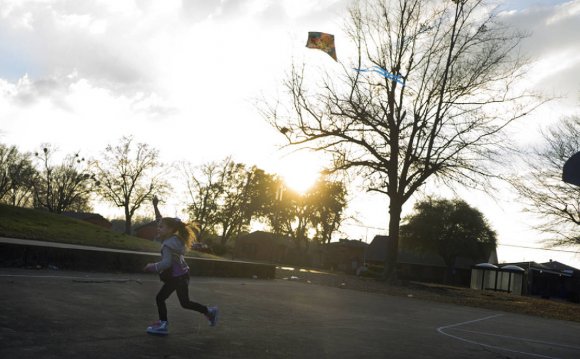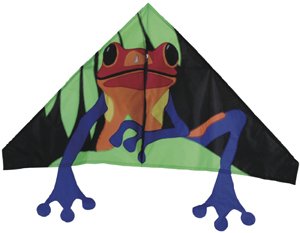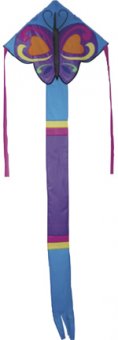

Online retailer KitesRus.com recommends several styles of kites for beginniners: delta kites (frog, above); the Easy Flyer (butterfly, below right); and the five-sized Penta (cow, below left).
Kite flying is an exhilarating and affordable way to bring in spring. Here are some basic tips to get your child’s kite airborne.
Getting A Kite
Kite prices can range from $14 for beginner models to $85 or more for professional ones. Bradley Weiner, regional director of the American Kitefliers Association, says that easy-to-fly delta kites are great for beginners. For more advanced kites, assembly can be complicated and time consuming, so allow enough time prior to flying.
Kite sellers such as and New Hope, PA-based offer information on various types of kites. To find a merchant who specializes in kites, visit (Make sure to call before visiting, because some listings are kite makers or online retailers, not shops.)
If your family would like to make the kite from scratch, you can use simple items already found in the home such as paper bags. For do-it-yourself instructions, visit www.howtomakeandflykites.com.
When and Where To Fly
 Once you’re ready, choose a day that is windy, but not too windy to steer the kite, advises meteorologist David Murphy of 6ABC Philadelphia. In heavy wind, it can be difficult to get your kite down once you are done.
Once you’re ready, choose a day that is windy, but not too windy to steer the kite, advises meteorologist David Murphy of 6ABC Philadelphia. In heavy wind, it can be difficult to get your kite down once you are done.
“Spring is the best season for kite flying because winds tend to be the most prevalent, ” says Murphy. “Of course, springtime is also the season for thunderstorms, so use caution. If you hear thunder, immediately reel in your kite and head indoors.”
To fly your kite, you’ll need plenty of running space and open sky. Most backyard yards are too restricted. Look for a place where trees, buildings or power lines will not interfere with your kite.
According to Murphy, “The best location for kite-flying is an open field or playground, away from obstructions. Not only will you avoid landing your kite in a tree, you’ll have a better chance of catching a good breeze since wind is slowed and deflected by trees and buildings.”
Ocean beaches are particularly well suited because they have steady winds. “On hot days when the air is stagnant, the co-called 'sea breeze' kicks in between noon and 1pm, ” Murphy explains. “This breeze rides in from the ocean, the result of uneven heating of the water and the adjacent land. It’s almost always strong enough to lift a kite.”
Make sure you are far enough away from other people, as a low-flying kite rope can cause serious injury.
Notable kite-flying locations are Belmont Plateau in Philadelphia and Jersey Shore beaches, especially the spacious Wildwood beach, where the country’s largest kite festival is held annually.
Launching and Landing
As kite flying calls for windy weather, bundle up. Certain kites work well with different wind speeds. Delta kites fly well in light wind (6-12mph), diamond kites are built for medium wind (13-17mph), and some highend, specialized kites require stronger winds of up to 30mph.
To get your kite up in the air, Weiner suggests, “The weather should be semi-windy, and you want your back to the wind.”
Once you’ve launched the kite, run toward the wind. Wear gloves to protect your hands in case you lose control of the rope and reel. The kiting website recommends reeling the line in and taking hold of the top of the kite so that the wind does not pick it back up. Get a firm grip to prevent the kite from tearing.
Happy flying!







